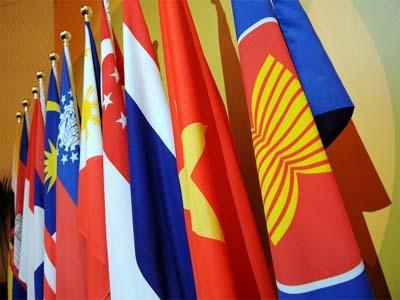 The following comments are some general and random thoughts on some of the questions surrounding the thrust of ASEAN’s institutional evolution over the next decade and the role that ASEAN may play in developing an Asia Pacific Community.
The following comments are some general and random thoughts on some of the questions surrounding the thrust of ASEAN’s institutional evolution over the next decade and the role that ASEAN may play in developing an Asia Pacific Community.
ASEAN presents us with a significant puzzle. Since its creation in 1967, the organization has evolved and changed. It has added members and become the hub of numerous regional institutions and initiatives. It has proven to be remarkably durable. It is now taking steps to make itself into an “ASEAN Community”. Yet, even so, scholars and observers of ASEAN remain locked in debates about what the institution means, what purposes it serves and, most importantly, how “effective” it is in organizing and promoting a “meaningful” regionalism in the Asia Pacific. Indeed, it is not clear if ASEAN’s presence has helped or hindered the development of regional institutional structures.
This brief paper takes the position that ASEAN represents the most that can be achieved in terms of regional institution-building in the Asia Pacific at this time. The factors that slow ASEAN’s evolution towards a more binding and coherent regional structure are problems that any Asia Pacific-wide regional institution would need to address. ASEAN’s durability is due to a number of factors, but one of them is that it knows when to stop pushing its members in directions with which they are not comfortable. Recent developments may suggest that ASEAN has begun to forget that lesson, but appearances may be deceiving. The lesson of ASEAN to other efforts to create regional multilateral structures is to be modest and moderate in the goals that any new institution tries to achieve. The membership of region-wide institution will create a very different dynamic than what is at work in ASEAN. Even so, the concerns of the majority of the members of any new institution will remain the same (or very similar) to those of the ASEAN members. Any new regional structure will need to find ways to address those concerns before it can prosper or help to lead the region into a more institutionalized direction.
Over the past two decades, ASEAN has experienced considerable institutional growth. After the end of the Cold War, the organization launched the ASEAN Free Trade Area (AFTA) and the ASEAN Regional Forum (ARF). After the 1997-1999 Asian Economic Crisis, ASEAN became the linchpin for the ASEAN Plus Three (APT), which has rapidly become one of the most active and ambitious regional institutions dealing with the economy of the Asia Pacific and may end up becoming the foundation of a distinctive Asian approach to international finance. Over the past decade, ASEAN has negotiated, or is in the process of negotiating, free trade agreements with most of its largest economic partners. Most recently, the organization has begun the ambitious project of constructing an ASEAN Community with three distinct pillars. As the first step to creating this AC, ASEAN has recently adopted the ASEAN Charter, a document that, for the first time, gives the organization a legal personality and commits its members to practices of democracy and human rights. As part of the AC process, ASEAN has established an ASEAN Intergovernmental Commission on Human Rights.
However, as with all things associated with ASEAN, it is unclear what all of these developments mean. Critics of ASEAN have an easy time pointing out the many apparent weaknesses in ASEAN’s various efforts. Thus, they can demonstrate that ASEAN was pushed into developing the ARF. The ARF may now be exhibiting some ability to enhance effective cooperation between its members in some security areas and it may enhance regional security by providing a forum in which powerful actors can meet, but its concrete accomplishments are difficult to see. The AFTA seems to have had very little impact on intra-ASEAN trade. The APT is largely being driven by the energy and interests of China. Trade agreements between ASEAN its trading partners are often more political than practical in effect and seem to have
little influence on trade, one way or the other. It is too early to say what effect the ASEAN Charter and the drive to establish an ASEAN Community will have. But there are grounds for skepticism. Already, some observers have accused the Charter of embodying contradictory principles. Others have dismissed the Human Rights Commission as being toothless.
Defenders of ASEAN tend to emphasize the role the organization has played in reducing regional tensions and promoting the conditions necessary for economic development in Southeast Asia. More recently, ASEAN has been lauded as playing an essential role in bringing China to the regional table in initiatives such as the ARF and APT. Rivalries and tensions between the leading regional powers give ASEAN a unique and necessary role in serving as an acceptable bridge between the more powerful states of the Asia Pacific. More subtly, some scholars pay particular attention to ASEAN’s functions as the embodiment of particular regional ideals and political realities. As Alice Ba has convincingly argued, ASEAN may be seen as ongoing series of debates and discussions about the appropriate roles and identities of the states of the region in relation to the important regional questions [Alice Ba, (Re)Negotiating East and Southeast Asia, Stanford University Press: Stanford, 2009].
To evaluate ASEAN and its role in regional multilateralism, I believe a few key points must be borne in mind. First and most important is that all of the ASEAN states, without exception, are pursuing policies that enhance their abilities to be durable and successful states. Usually, this priority is expressed as an unflagging commitment to the principles of state sovereignty. This focus on sovereignty does not reflect some mere ideological commitment or an intransigent refusal to recognize the political and social realities of globalization. Rather, it is seen as an absolute necessity. All of the ASEAN states remain fixated on their supposed fragility as states and remain convinced that addressing the challenges of the future requires having a firm a grip on their sovereign rights. This concern with sovereignty is a bit of a misperception, however. All states must make some sacrifices of sovereignty in their dealings with the world and it may be that fragile states can be strengthened, in some areas, by relaxing their grip on some of the trappings of sovereignty. It is in this reality that there is some hope for the development of stronger multilateralism in the Asia Pacific region.
What this observation suggests is that ASEAN is limited in how far it can develop through its own internal dynamics. The ASEAN Community is a good idea, but it will not be more than a relatively loose conglomeration of states until its members are comfortable with their own stability. In the past, ASEAN has evolved in response to pressure from external factors. I think that this will continue to be the pattern that it follows. The ASEAN Community is an effort to rehabilitate and reinvigorate ASEAN in the aftermath of some events that have called the institution’s efficacy into question (such as the 1997-1999 economic crisis, the unrest in East Timor and the continuing problem of regional haze). But the concerns with sovereignty and stability that have always prevented the growth of a strong ASEAN identity continue to apply and have even been exacerbated by the inclusion of the mainland Southeast Asian states into the organization in the 1990s. Today, ASEAN is most likely to evolve in response to the pressures from China, Japan and the United States as they vie for influence in the region. “Evolution” does not need to have a positive outcome, however. As unlikely as it seems, it is also possible that ASEAN could collapse under the competing pressures from the big powers.
A similar analysis applies to all efforts at constructing regional multilateralism/institutionalism: it is a good idea and it can be done. However, Asia Pacific-wide ML institutions cannot be modeled on the image of, for example, the European Union. Even if the successes of the EU in building a “European identity” are exaggerated (and I think that they certainly are), the AP region is not capable of creating equivalent structures. There is too much division, uncertainty and political variation to allow for anything comparable to develop in the Asia Pacific. The most important factor in binding the EU together has been its pre-existing economic ties, ties that have gotten stronger as the grouping has improved its interactions. In Asia, the evolving economic structures are beginning to centre around China and its burgeoning economy. The complex security, political and social relationships between China and many of the states of the region (not to mention the competing influence of actors such as the United States, Japan and India) means that whatever multilateral structures emerge, they will need to manage tensions and rivalries that seem to be in permanent abeyance in Europe. This means that Asia Pacific multilateralism will be, for the foreseeable future, an arrangement between sovereign states that remain conscious of their differences.
This likelihood does not preclude successful cooperation, of course. Historically, most multilateral structures have been understood as limited arrangements between sovereign states pursuing mutual interests. In the Asia Pacific, there are many, many more common interests on which to build strong multilateral structures than almost anywhere else in the world. The same concern with state fragility that has undermined some efforts at institution-building also provide a powerful argument for cooperation and mutually beneficial political, economic and security relationships. But this cannot mean the development of highly institutionalized, formal structures.
The model of the “ASEAN way” has evolved because it fits the conditions of the region. While the “ASEAN way” may not be broadly applicable to the Asia Pacific as a whole, its lessons are worth learning. Any new multilateral structure in the Asia Pacific may need to have different expectations of different members. It must be able to accommodate states that are concerned about their overall stability as well as states that are confident enough in their sovereignty to be willing to give up some of it. New regional multilateralism should measure its success not in how far the institution advances as a whole but by how many mutually beneficial relationships and arrangements it can facilitate between individual members and even outside the auspices of the institution. Finally, the contribution that ASEAN has made to building “regional security” in Southeast Asia has hinged on the argument that regional cooperation and unity facilitates the development and resilience of individual states. This is not necessarily an argument that will have resonance across the entire region.
As I understand it, the proposed Asia Pacific Community suggested by Australia is envisioned as a regular meeting of state leaders from across the region. They will take the opportunity to discuss regional economic and security issues at a level that can have a productive effect. The grouping seems to have modest initial expectations, but there also seems to be a sense that it can eventually help to direct existing institutions in how they deal with “the geo-strategic and economic challenges” of the twenty-first century[Richard Woolcott, “Towards an Asia-Pacific Community”, Discussion Paper, October 12, 2009, p.3]. This suggestion may have the potential to undermine, or at least challenge, ASEAN’s primacy in the region. That leads to the final consideration: what is the role that ASEAN itself may play in creating new institutional structures?
To date, ASEAN has been insistent upon its right to be at the hub of regional structures. This arrangement has guaranteed ASEAN a leading role in regional development and ensured that its interests are protected. However, this approach has also ensured that institutional development, at times, has been slow and frustrating.
ASEAN will attempt to function as a bloc within whatever “Asia Pacific Community” comes into existence. Over time, the demonstration effect of other regional states pursuing goals, opportunities and relationships at a faster pace may be enough to pull all of ASEAN forward. ASEAN can either regard a new Asia Pacific Community as another external force which it must evolve to accommodate, or it could see it as an initiative that threatens to pull individual ASEAN states further away from the group. It is important to be aware of these possibilities, even if there is no immediate way to respond to these concerns.
I hope that these comments are helpful, to some small degree. I will continue to consider these questions in the run-up to the conference.
Shaun Narine
St. Thomas University










































